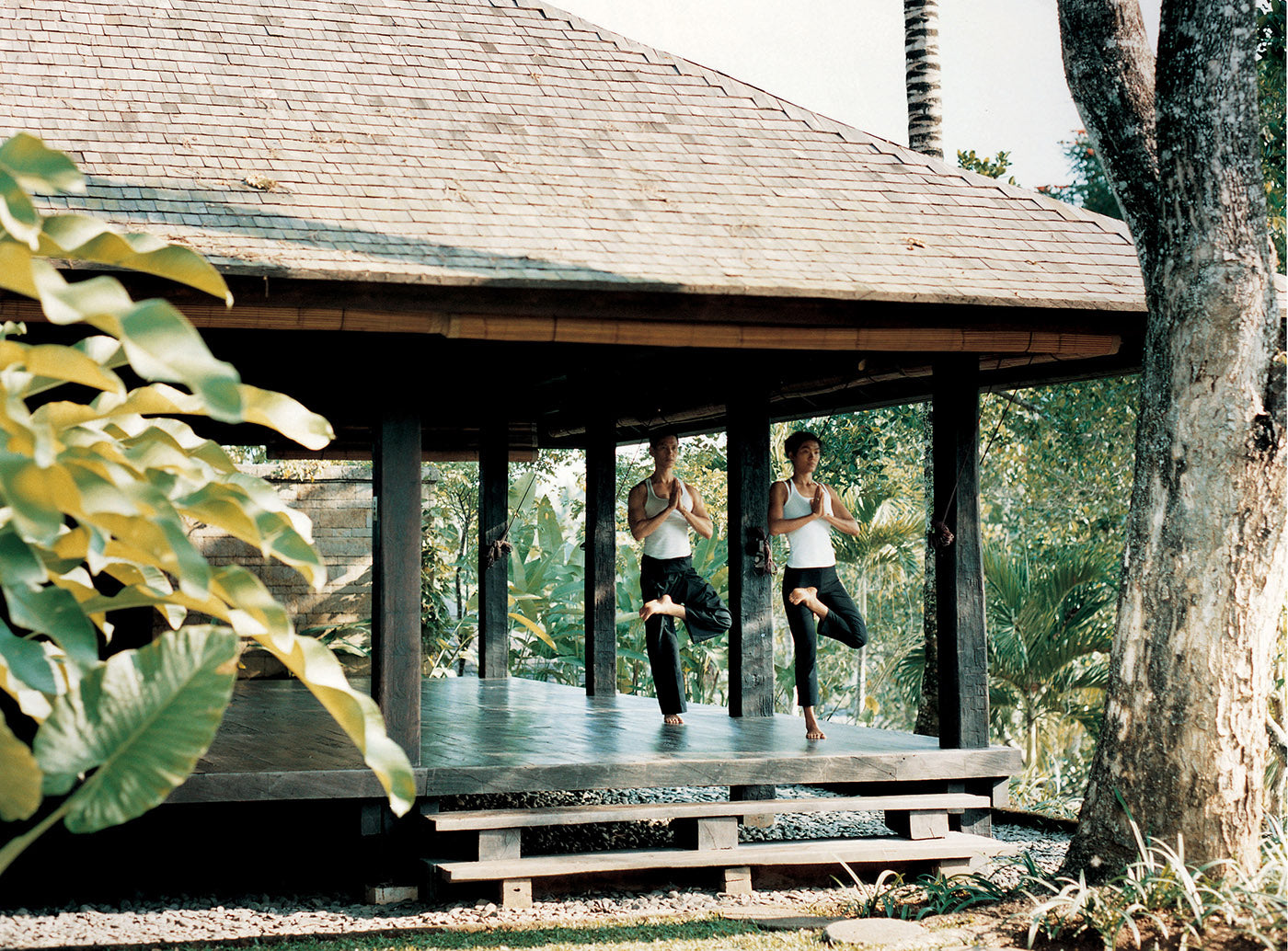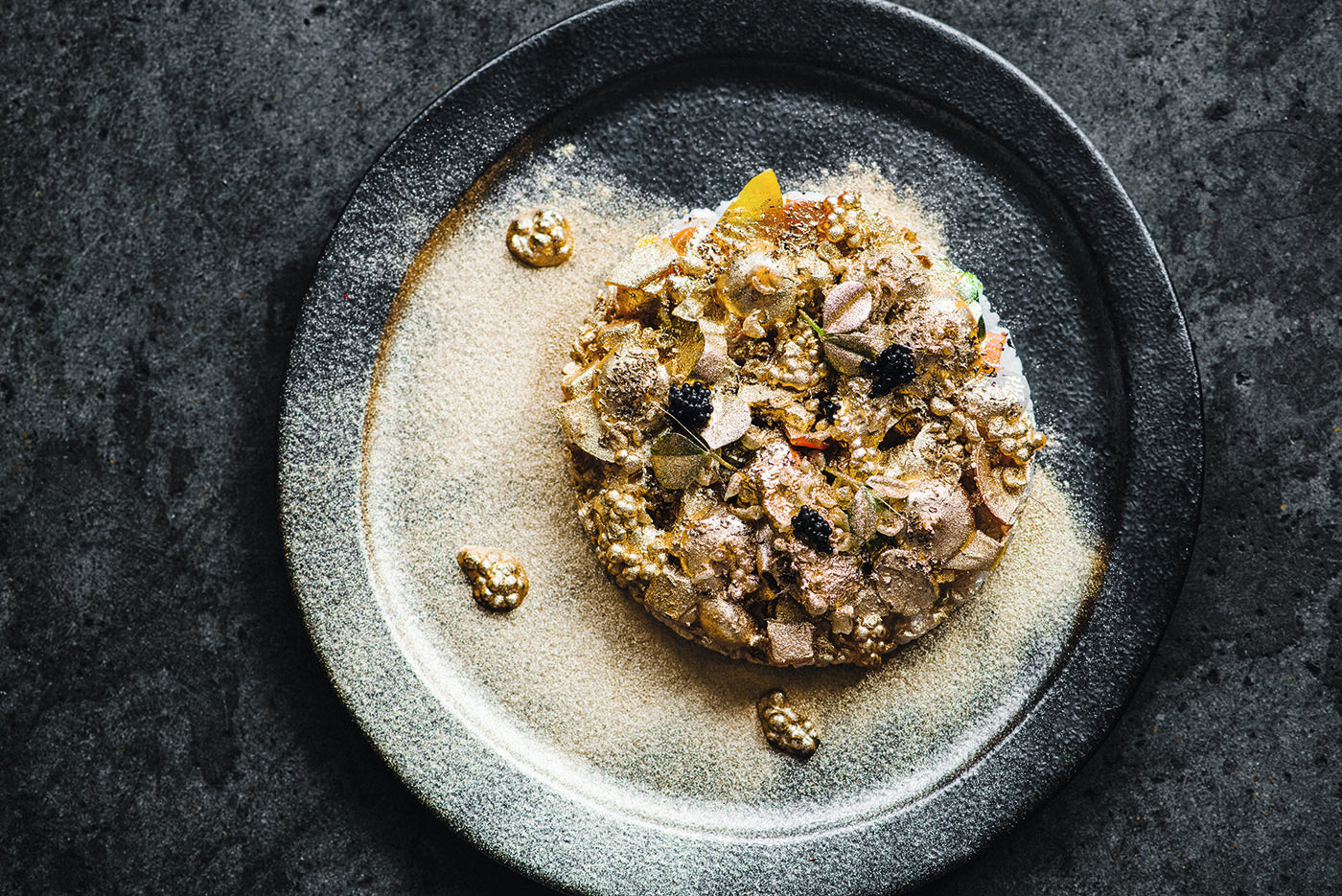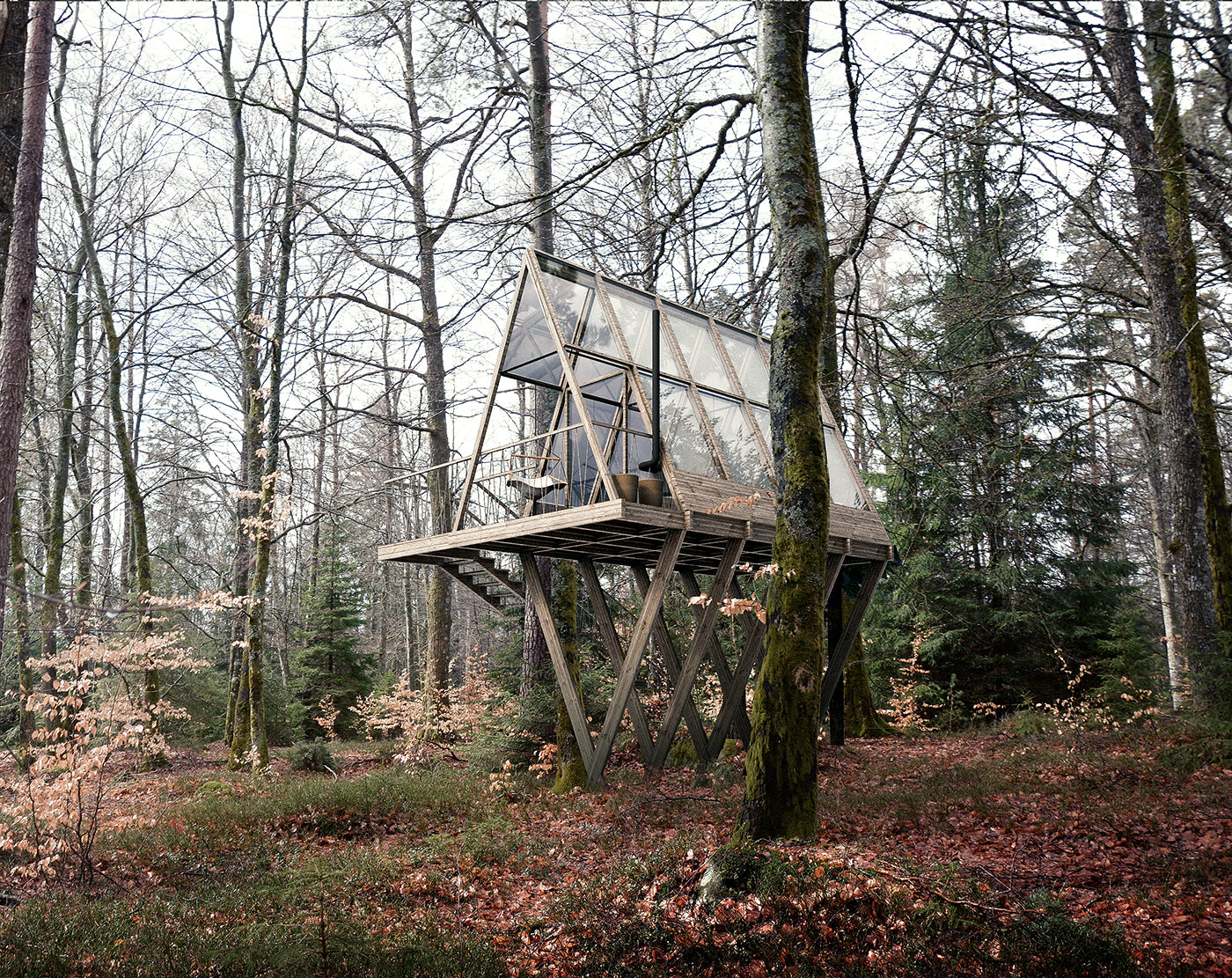
Finding Wellbeing in the Woods
Sourcing sustainable food systems in a Scandinavia fores
Restaurateurs Mette Helbæk and Flemming Hansen know the benefits of living off the land, and they’re sharing this with others from their foodie commune in a Swedish forest.
Hansen and Helbæk have been collaborating in the culinary world for over 15 years—he is a chef with strong farm-to-table ethics and she's a food writer. Together they opened a restaurant set in a greenhouse as part of Scandinavia’s first rooftop farm, ØsterGRO, in Copenhagen. Despite the restaurant’s success, they yearned for something else. “We wanted to find amazing natural surroundings so we could bring our guests out to the farm instead of bringing the vegetables to the guests,” Hansen says.
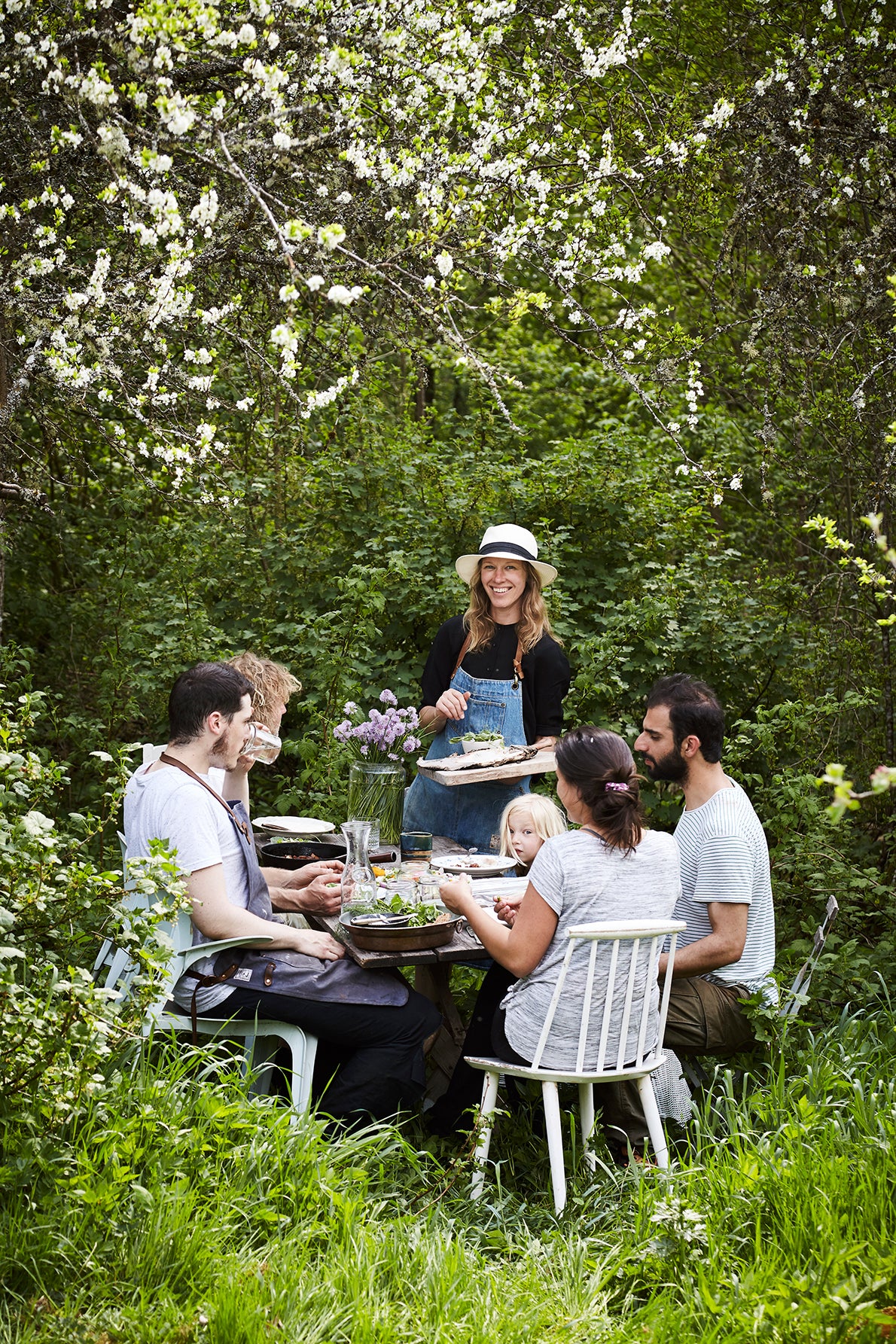
Stedsans in the Woods is in Halland, Sweden. The chefs in the commune have mastered the art of cooking without electricity, Using the land and traditional techniques, they've developed a modern and sustainable approach to local cuisine. (Photo: Stine Christiansen, Farmlife)
It took 18 months to find the perfect forest. Set at the edge of Lake Halla in southern Sweden, ‘Stedsans in the Woods’ sees over 17 acres of dense forest dotted with tiny cabins and an outdoor kitchen and restaurant. Since moving to the forest in autumn 2016, they’ve created a lab for a new modern lifestyle—not one that is highly technology-driven, but rather that is simple and abundant in its connection with the landscape and the seasons. “The closer we are to nature, the better we feel,” Hansen says. “We want to inspire people to bring more nature into their everyday life, whether that’s simply growing a little food, eating clean, or using less.”
Here, guests come to dine and stay. They wake immersed in the quiet of the woods, with only a sweet soundtrack of bird songs. Food is healthy and served family-style at a communal table. There is a floating sauna in a nod to the therapeutic Nordic tradition. Stedsans means “a sense of location” in Danish, which is a powerful manifesto to build on; they draw focus to the distinct terroir of their food and encourage visitors to connect with the surrounding environment and the present moment.
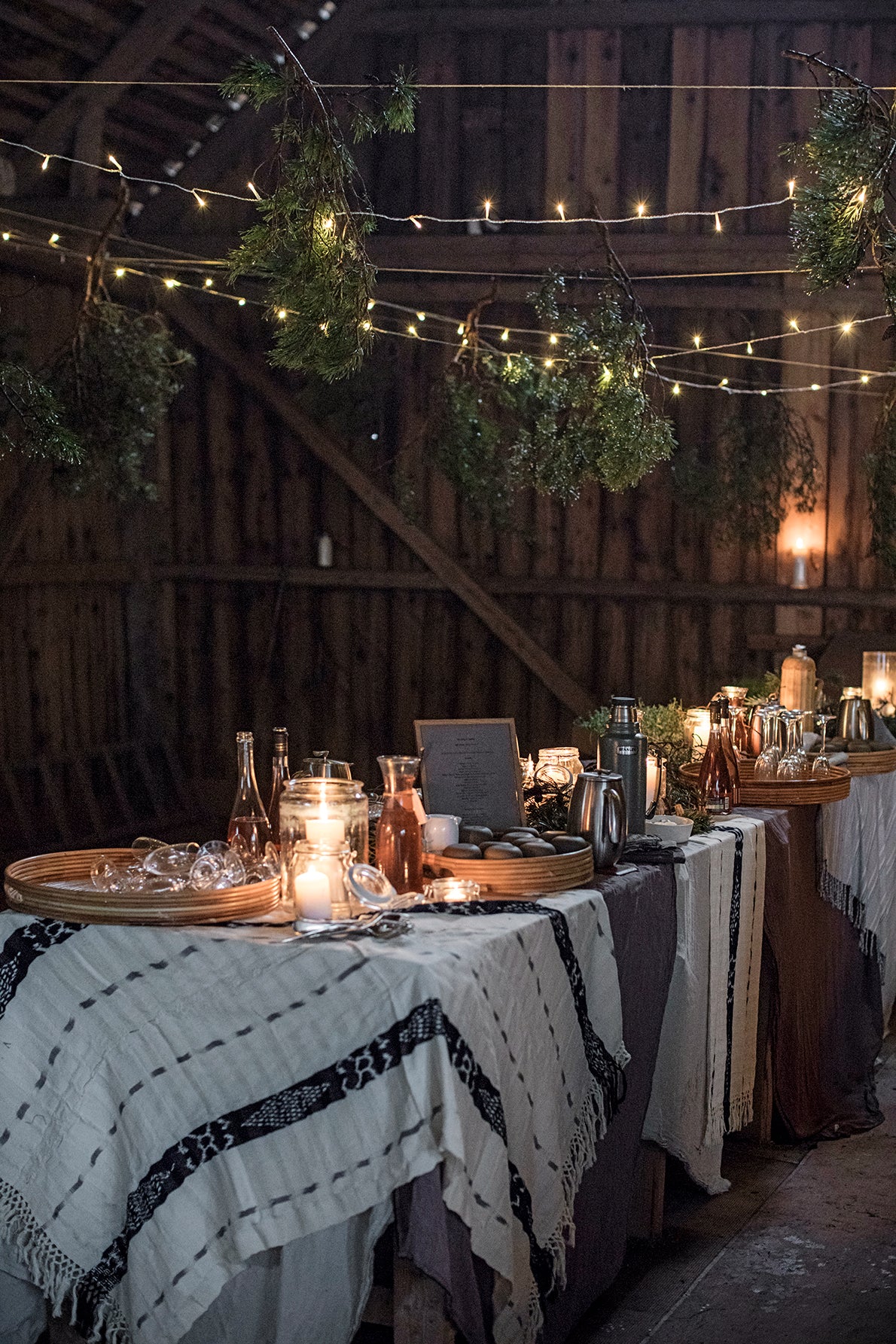
Finding peace away from the city, they are learning to live a more sustainable lifestyle that makes everyone more conscious about food choices. (Photo: Stine Christiansen, Farmlife)
The centerpiece of Stedsans is the kitchen. “We created a beautiful kitchen in the middle of the forest with no electricity,” Hansen says. They cook simply, often over an open fire, using vegetables from their permaculture garden and foods foraged from the forest floor—blueberries, wildflowers, edible mosses, and mushrooms. They also source from local growers. “We have so many interesting producers in our neighborhood. Within a 45-minute radius, we can get fish from the lakes, crayfish from the ocean, and unpasteurized cheese. It is meaningful that we support the good people around us.”
The farm is not 100 percent self-sufficient. “That would mean that we would have to skip coffee, chocolate, and wine,” Hansen says. They cook simply, often over an open fire, using vegetables explains cheekily. But the team is impressively growing about 90 percent of the vegetables they need. They have 2.5 acres of vegetables and fruit, chickens, heritage-breed Linderöd pigs, and an insect hotel to prevent pests and encourage pollination. “We are animists—we believe that every living thing has a soul. This means we treat everything with respect: both animals and plants.”

Finding tranquility in nature, Flemming Hansen and Mette Helbæk have also developed and learned more as individuals while being surrounded by nature, farms, and forestry. (Photo: Stine Christiansen, Farmlife)
Ingredients are picked only hours before being cooked and served, bringing unparalleled freshness to the restaurant industry. Food scraps are fed to the animals or composted to become topsoil; gardens are watered with filtered water from the showers; the kitchen operates with minimal packaging, transportation, and fossil fuels, resulting in a low environmental footprint. “We want to create good soil with deep roots and a lot of life. We want to live life in abundance. That means we eat good food and surround ourselves with nice things. It’s about quality instead of quantity.”
Hansen and Helbæk believe that sustainability and happiness are linked, which is why Stedsans in the Woods is an experience geared toward wellbeing⎯for both their guests and themselves.
Go back to the roots of farmlife and living in nature, available in German and English.

